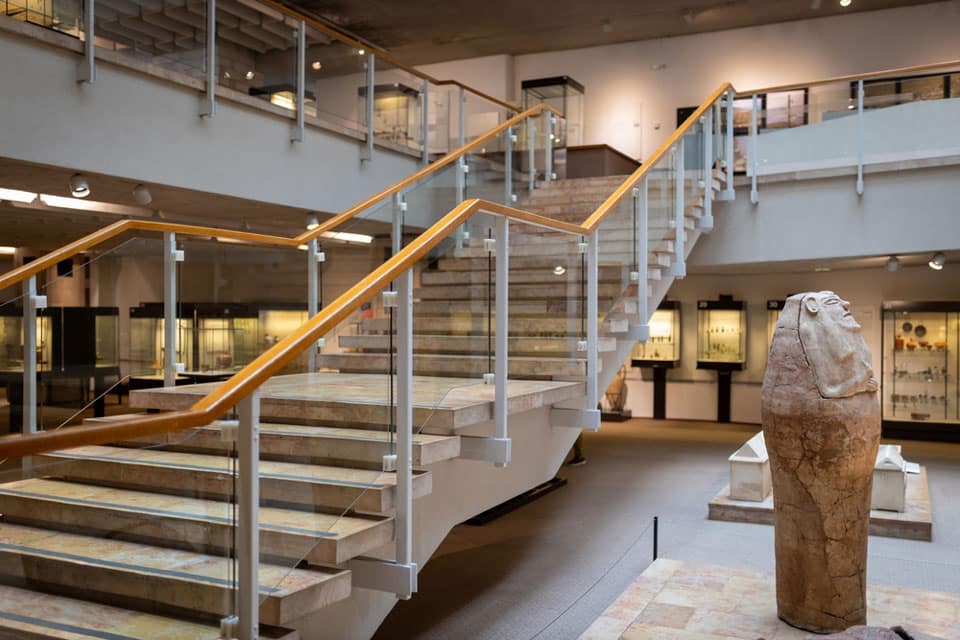Business Lessons Learned from a Broken 3,500-Year-Old Artifact

We’re all familiar with the signs you see in stores where fragile items are on display: “You break it, you buy it.”
So imagine how the father of a four-year-old boy felt when his son accidentally toppled and smashed a rare 3,500-year-old jar on a trip to a museum—rare because it was still intact!
It happened at The Hecht Museum in Haifa, Israel when the boy pulled on the artifact because he was curious to see what was inside.
What happened next is quite remarkable. Instead of expressing outrage, the Museum accepted the fact they’d chosen to display the jar without protective glass because of the “special charm” in showing archaeological finds without obstructions. They were aware there was a potential danger.
And they invited the boy and his family to return for a specially organized tour so they wouldn’t be too traumatized by the accident.
When I read this story it occurred to me that there are several valuable lessons that apply to business.
Risk management
The museum was well aware of the risk it was taking in displaying the jar in an open environment, prioritizing aesthetic appeal and accessibility. The incident underscores the importance of evaluating the balance between user experience and the protection of valuable assets. It emphasizes the need to weigh the pros and cons of every project you undertake. Do the potential benefits outweigh the potential risks?
Crisis response
The museum’s thoughtful, considerate, and empathetic approach was immediate. Without hesitation key personnel turned a potentially negative situation into a positive one. Responding with this kind of calm and understanding, especially to incidents involving clients or customers, maintains and enhances reputation and customer relationships.
Transparency and communication
The openness with which the museum staff reported the event, announced their plans to restore the jar, and the steps they’d taken to alleviate the family’s guilt was the perfect strategy. Transparency and honesty in business operations, especially when things go wrong, is essential in building and sustaining trust.
Continual improvement and adaptation
The fact that the incident happened should spur the museum to reevaluate its policy. Is having artifacts on display without protection such a good idea? Or maybe they should step up visibility of “do not touch” signs. Similarly, any business crisis demands a post-mortem as to what went wrong and what can be done differently in the future.
Branding opportunity
The way that the museum handled this situation showcases its values and priorities to the public. In fact, it generated positive publicity across the globe, heightened awareness of the museum, and potentially will increase the number of visitors. There could have been headlines about a “terror tot” destroying a priceless museum piece. Instead, the museum enhanced its image and its brand. Companies similarly should seek a silver lining out of adversity.
Long-term vision
The decision to not penalize the family reflects a long-term focus on educational value and community engagement instead of short-term financial recovery or negative warnings about visitor behavior. For businesses, concentrating on enduring relationships and creating goodwill will yield greater benefits including customer loyalty and enhanced reputation.
Strengthen your long-term success
The breaking of a 3,500-year-old artifact at The Hecht Museum offers key business lessons in risk management, crisis response, transparency, continuous improvement, branding, and long-term vision. By managing the situation with grace and empathy, the museum turned a potential disaster into an opportunity to enhance its reputation and deepen community ties. Similarly, businesses can learn from this incident by prioritizing customer relationships, embracing transparency, and seeking growth, even in challenging situations. It’s a reminder that how you deal with a crisis can define your brand and strengthen long-term success.
Written by Jason Richmond.
Have you read?
Best CEOs. Best Companies. Richest People (Billionaires). Richest Women (Billionaires). Richest in Each Country (Billionaires).
Bring the best of the CEOWORLD magazine's global journalism to audiences in the United States and around the world. - Add CEOWORLD magazine to your Google News feed.
Follow CEOWORLD magazine headlines on: Google News, LinkedIn, Twitter, and Facebook.
Copyright 2025 The CEOWORLD magazine. All rights reserved. This material (and any extract from it) must not be copied, redistributed or placed on any website, without CEOWORLD magazine' prior written consent. For media queries, please contact: info@ceoworld.biz








